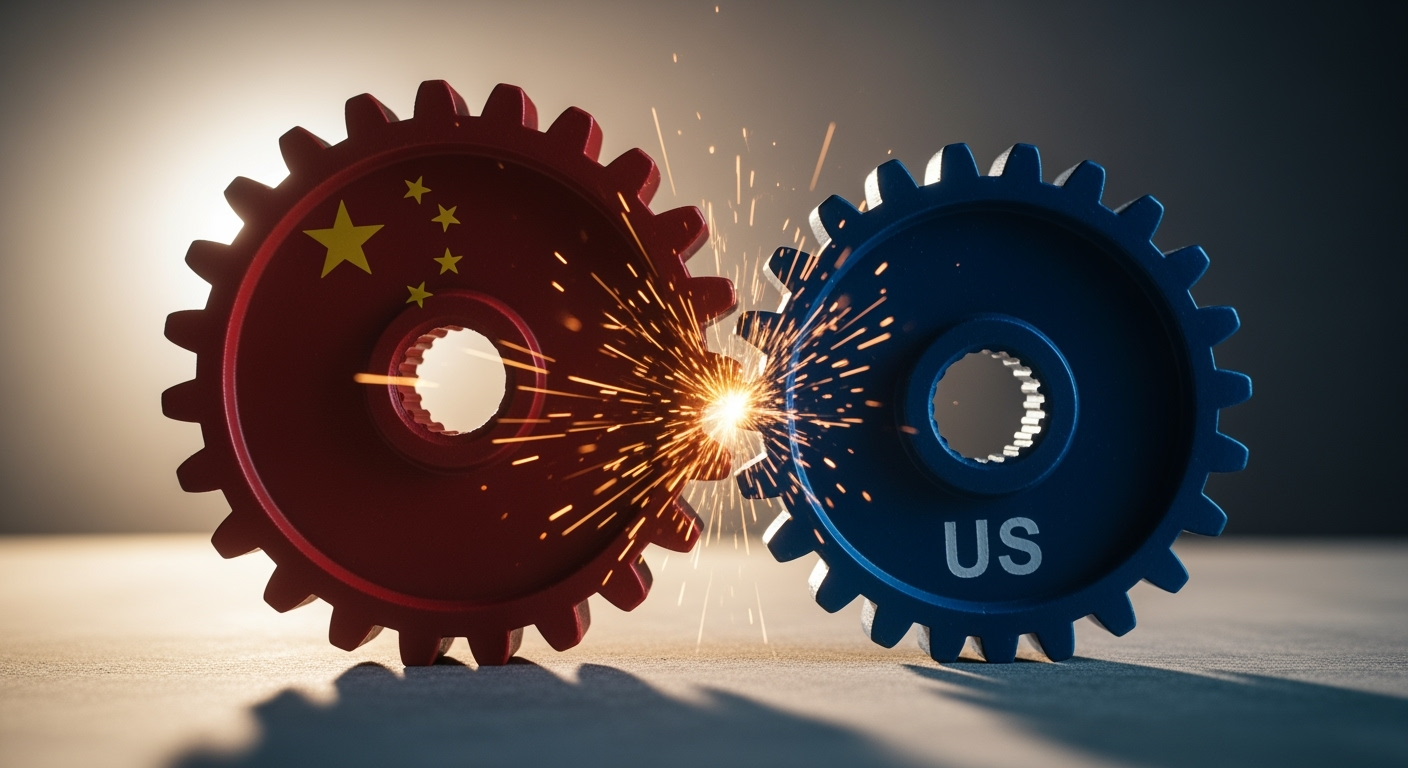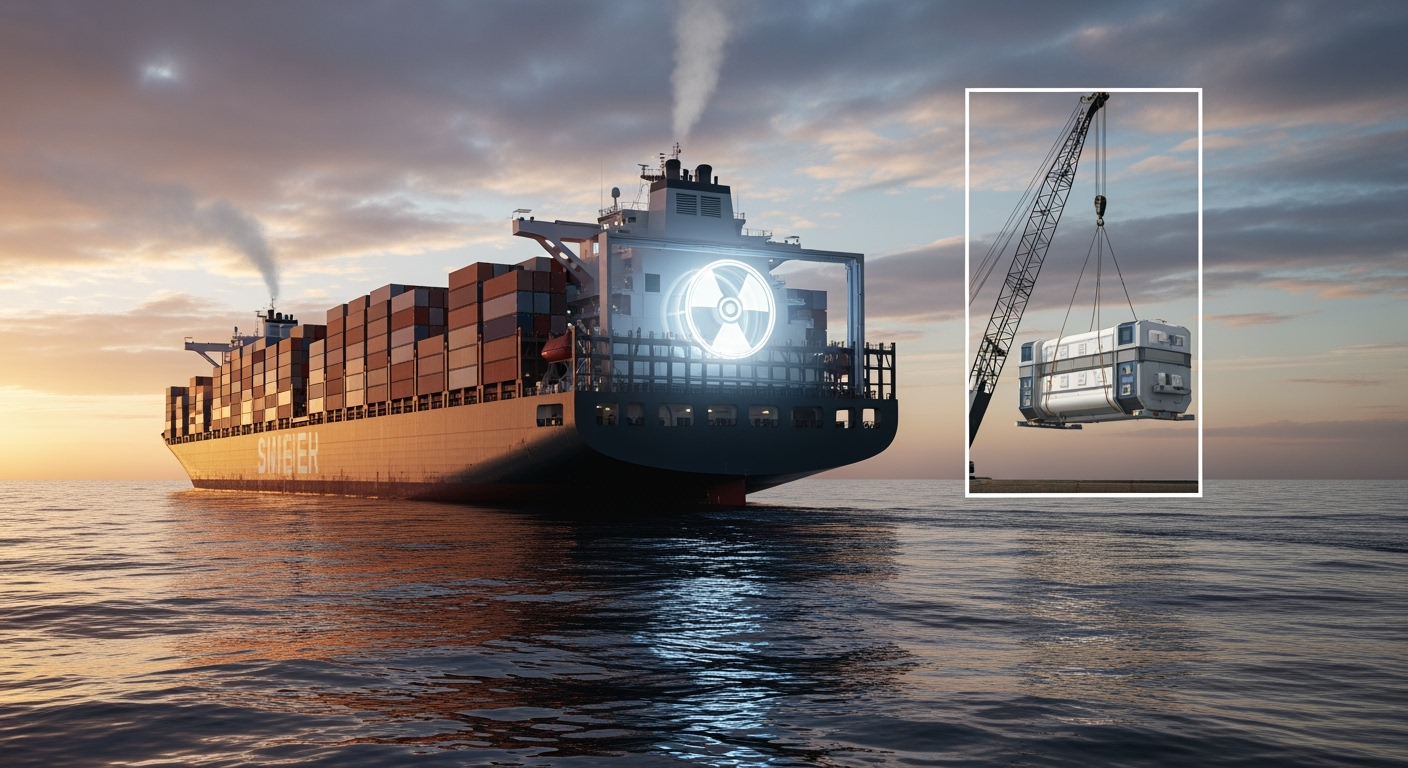Related Articles

China's Ambitious Pursuit: Challenging America's AI Dominance




The vast network of global shipping, the lifeblood of international trade, faces an increasingly urgent mandate: dramatically reduce its substantial carbon footprint. As the maritime industry grapples with ambitious decarbonization targets, an old yet re-energized solution is gaining traction: nuclear propulsion. While nuclear-powered vessels have long served military fleets, advancements in reactor technology, particularly Small Modular Reactors (SMRs), are prompting a serious re-evaluation of their commercial viability, offering a path to emissions-free shipping that could revolutionize how goods traverse the world's oceans.
Global shipping currently accounts for approximately 3% of worldwide greenhouse gas (GHG) emissions, alongside a significant portion of nitrogen oxide (NOx) and sulfur oxide (SOx) emissions, posing a substantial environmental challenge. In response to this pressing concern, the International Maritime Organization (IMO) has set forth stringent targets aimed at steering the industry toward a sustainable future. These ambitious goals include a minimum 20% reduction in emissions by 2030, striving for 30%, and a substantial 70% to 80% reduction by 2040, ultimately targeting net-zero emissions by or around 2050. Achieving these objectives necessitates a profound shift from traditional fossil fuels to cleaner energy sources.
Nuclear power presents a compelling case in this decarbonization drive. Unlike conventional marine fuels, nuclear propulsion systems emit virtually no carbon dioxide, NOx, SOx, or particulate matter during operation. This inherent cleanliness positions it as a powerful contender for meeting stringent environmental regulations. Furthermore, nuclear-powered ships boast unparalleled endurance, capable of operating for years, even decades, without needing to refuel. This extended range not only enhances operational efficiency but also offers significant energy security, insulating vessels from the volatility of global fossil fuel prices and potential supply chain disruptions. The potential to reduce radioactive waste generation through advanced nuclear technologies further underscores its long-term environmental promise.
The concept of nuclear propulsion in maritime applications is not new; naval vessels, including submarines and aircraft carriers, have reliably utilized nuclear reactors for over 60 years. However, the prospect of extending this technology to commercial shipping has historically been hampered by concerns over safety, cost, and complexity. The advent of Small Modular Reactors (SMRs) is fundamentally altering this landscape. SMRs are compact, scalable nuclear reactors designed for enhanced safety, efficiency, and modular construction, often factory-fabricated and easier to transport and assemble. Their inherent safety features, such as passive cooling systems, reduce the risk of catastrophic incidents.
Various SMR designs are under active development for maritime use, including Pressurized Water Reactors (PWRs), Molten Salt Reactors (MSRs), and even advanced lead-cooled or pebble-bed reactors. MSRs, in particular, are highlighted for their potential to deliver significantly lower operating expenses and their immunity to carbon taxation, further enhancing their economic appeal. Major industry players, including shipbuilding giants like Samsung Heavy Industries, HD Hyundai Heavy Industries, and Hanwha Ocean, alongside energy technology companies such as TerraPower, Newcleo, and Rolls-Royce, are actively investing in and developing these next-generation reactors for marine applications. The potential for Floating Nuclear Power Plants (FNPPs) to provide clean energy to coastal areas and ports also represents a significant innovation in the broader application of marine nuclear technology. These technological leaps suggest that the once-niche application of nuclear power could become a mainstream solution for commercial vessels.
Despite the compelling advantages and technological progress, the widespread adoption of nuclear propulsion in commercial shipping faces significant hurdles. Paramount among these are the complex issues surrounding regulatory harmonization, safety protocols, public perception, and commercial insurance. The current international regulatory framework, primarily designed for naval vessels, is largely deemed insufficient for the unique challenges and demands of commercial nuclear-powered merchant ships.
Key concerns include the potential for accidents such as collisions, machinery failure, fire, or explosions, which could lead to low-level radiation release, thermal pollution, or the more challenging issue of radioactive waste management at sea. Past incidents involving naval vessels, particularly the handling of nuclear waste by the Soviet Union, serve as stark reminders of potential ecological impacts, even as U.S. naval operations demonstrate a strong safety record with minimal environmental impact. Public opposition and social-political risks remain substantial, often fueled by historical anxieties about nuclear technology. Furthermore, commercial insurance for vessels equipped with naval-style reactors is a significant barrier, limiting their use in many ports and nearshore environments. Addressing these challenges requires concerted efforts to develop updated and harmonized international regulations, robust crew training and qualification standards, enhanced cybersecurity measures, and clear frameworks for shared liability. Organizations like Lloyd's Register and the International Association of Classification Societies (IACS) are actively developing guidance and frameworks to address these gaps, underscoring the collaborative effort required across industry, regulators, and governments.
The economic viability of nuclear-powered commercial vessels is another critical consideration. While the initial capital expenditure for constructing such ships is considerably higher than for conventionally fueled counterparts, studies indicate that nuclear propulsion could offer the lowest operational cost per tonne shipped over a vessel's lifetime. This long-term cost advantage stems primarily from the elimination of ongoing fuel costs for decades, immunity from fluctuating fuel prices, and avoidance of future carbon taxes and emissions penalties mandated by frameworks like the IMO's Net-Zero Framework. Additionally, the compact nature of SMRs means less space is required for fuel storage, potentially increasing cargo capacity and profitability. However, these benefits must be weighed against higher crewing costs due to the need for highly specialized nuclear-trained personnel.
The IMO's recently approved Net-Zero Framework, which includes mandatory emissions limits and a global pricing mechanism for GHG emissions, is set to be formally adopted in October 2025 and enter into force in 2027. This regulatory push will significantly incentivize the development and adoption of zero- and near-zero emission technologies, potentially making nuclear propulsion more economically competitive. Experts predict that with concerted effort from industry stakeholders, regulatory bodies, and governments, commercial deployment of nuclear-powered vessels could become a reality by 2040-2045, with earlier pilot projects for port-based SMRs leading the way. This timeline aligns with the IMO's long-term decarbonization goals, positioning nuclear power as a crucial, albeit complex, element in the shipping industry's future energy mix.
The global shipping industry stands at a crossroads, pressured to reconcile its vital economic role with its environmental responsibilities. Nuclear power, once relegated primarily to military applications, is re-emerging as a potent force in the quest for maritime decarbonization. The promise of zero operational emissions, extended endurance, and long-term cost stability, driven by advancements in SMR technology, presents a transformative vision for global trade. However, realizing this vision demands overcoming formidable challenges in regulatory harmonization, ensuring impeccable safety standards, and fostering public trust. While the path to a nuclear-powered commercial fleet is fraught with complexities, the unwavering commitment to net-zero emissions, coupled with ongoing technological innovation and collaborative international efforts, suggests that nuclear energy will likely play a significant, if carefully managed, role in charting the future course of global shipping.